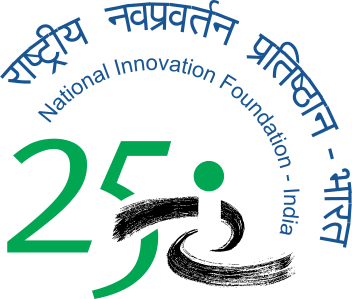Efforts to use herbal extract for preventive health care
The Village Titoi is a multicaste village having Choudhary, Gamit, Vasava and Harijan communities. The main occupations are farming and cattle rearing. The crops cultivated are sorghum, pigeon pea, maize, black gram and paddy. The village has post office, primary school,veterinary clinic, milk cooperative and a plant- nursery. Literacy level is high with people having studied up to graduation and post-graduation level. The villagers select one day after the first rainfall before `divasa,' a particular day in Gujarati calendar for the performance of `Nadervo'. The day is selected in such a way that the festival does not hinder the sowing activities, hence it varies according to rain. The entire village takes part in this institution and abides with its rules. On the selected day of the festival, the herbal experts, elders and youth of the village go to the nearby forest to collect one hundred and twenty five herbs. One important point to note here is that collection of herbs is a collective and community work. The forest near the village does not have all the herbs needed. Therefore, herbs are also collected from the forests of nearby villages like Jetpur, Kavadiya, Karitha and Sangalvadi. While collecting the herbs nobody speaks the name of the plants and hence all the names are not known to the everybody though they can identify the plant by its appearance. On the next day, `sag'(Tectona grandis) leaves are spread and the collected herbs are placed on them. The herbs are then ground and kept in a large vessel. It is customary for each household to bring a litre of water and pour it in the vessel having the ground herbs. The village priest stirs the mixture very well, which is then filtered. Each household gets one litre of the filtrate with some part of the residue. The male member of the family brings this filtrate and sprinkles it in the entire house, in the cattle shed and on the cattle. Women are not allowed to touch this filtrate or take part in this whole ritual. It is believed that sprinkling of this concoction keeps ailments like fever, common cold, and all contagious diseases away. It is also claimed to keep the livestock healthy and fit. Another festival known as `Paki bandhi' is celebrated on the Sunday or Wednesday before `raksha bandhan'- a national festival generally occurring in the month of August. On this day, a `toran'/ festoon (kind of a door hanging) made of `asopalav' (Poliyalthia longifolia) leaves and coconut fruits is tied between two poles erected on the either side of the road leading to the entrance of the village. Also hung with the `toran' is, a two feet long hollow bamboo stick filled with the residue of the filtrate and the holy water brought from a temple in a nearby village `dhoran Pardi'. The priest of temple in `dhoran Pardi' gives this water to perform the ritual. A procession of all the villagers with their domesticated animals passes under the `toran'. This procession finally stops at the nearby tree where memorials of the ancestors of the villagers have been made. There they pay homage to the forest for providing these herbs by burning incense sticks and offering coconut fruits. No food is prepared in the village till the procession is completed. From this day onwards the people stop the consumption of non- vegetarian food, garlic, onion and liquor for three to four days. No outsiders are allowed to pass under the `toran' on this day. Even animals like cats and dogs are prevented from passing under the `toran'. Each household contributes towards the expenditure made on collecting the herbs from the forest. The significance of these cultural institutions in reinforcing conservation ethics has to be appreciated. While some of the ritual might not have any significant technological effect, these may cement the ties of the people with nature. Challenge Ahead The youth of this village is eager and enthusiastic to carry on this health institution. But the elders and the herbal experts of the village do not reveal all the names and uses of the plants. In spite of that, they are able to identify many plants and their uses owing to the experience of so many years. They say that they are committed to keep this institution alive, which shall go on with mutual cooperation. The example set by this village by celebrating this institution of health so religiously is worth emulating by other villages too. Probably by not sharing the names of the herbs, the elders are trying to maintain their control over knowledge and perhaps also avoid over exploitation of the resources. However, village elders believe that the effectiveness of the herbs will reduce if they reveal the name and uses of plants. The names of the plants which are well known among the 125 species used in this institution are: `gandhati' (Lantana camara), khakhra' (Butea monosperma), `limda' (Azadirachta indica), `khajur' (Phoenix sylvestris), `timru'(Diosypros melanoxylon), `danto' (Amaranthus gangeticus), `amarvel' (Cuscuta spp.), `sag' (Tectona grandis), `kuvado' (Leucas lavandulefolia), `gudlu' (Rhamnus triquetra), `khai' (Acacia catechu), `biyo' (Pterocarpus marsupium), `thor' (Euphorbia spp.), `aakdo' (Calotropis spp.), `ambda' (Emblica officinalis), `baman jali' (Premna herbacea), `panipoth' (Terwia nudiflora), `pai' (Dalbergia paniculata),`samlo' (Bombax malabaricum), `bili' (Aegle marmelosa), `anuchadi' (Annona squamosa), `ratanjyot' (Jatropha curcas), `kamboi' (Breynia retusa), `royani' (Soymida febrifuga), `ragatrohido' (Tecomella undulata), `nilgiri' (Eucalyptus spp.)








